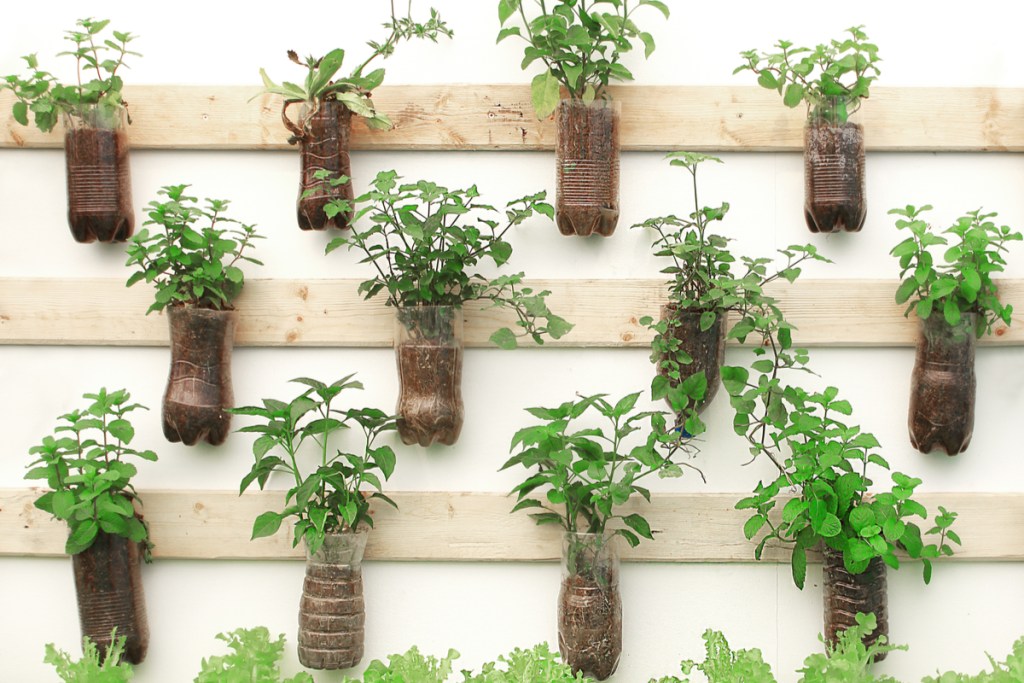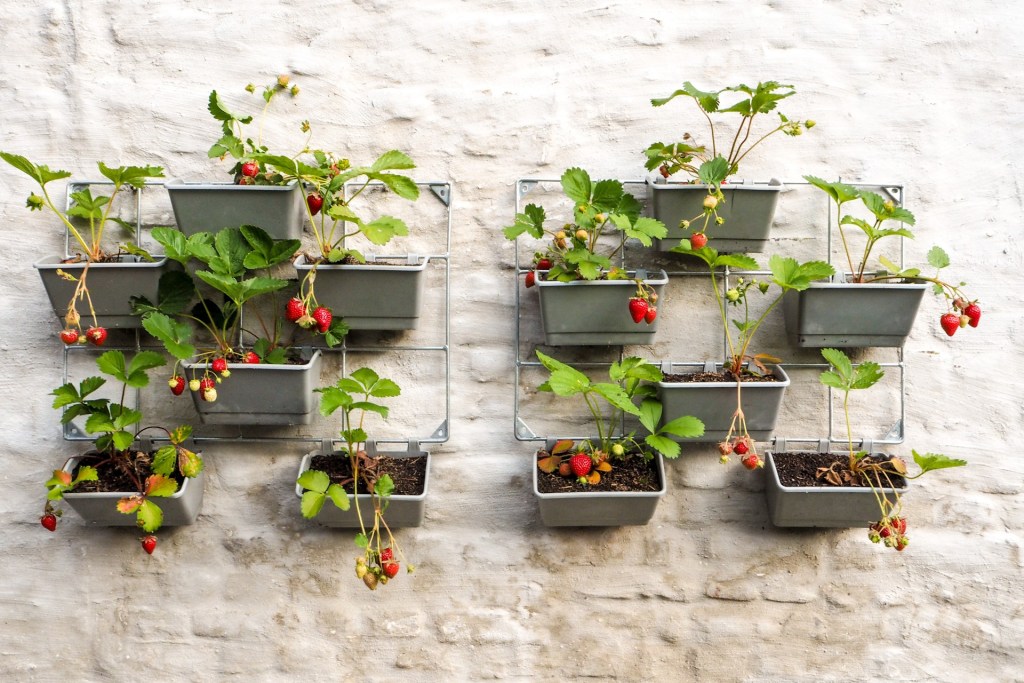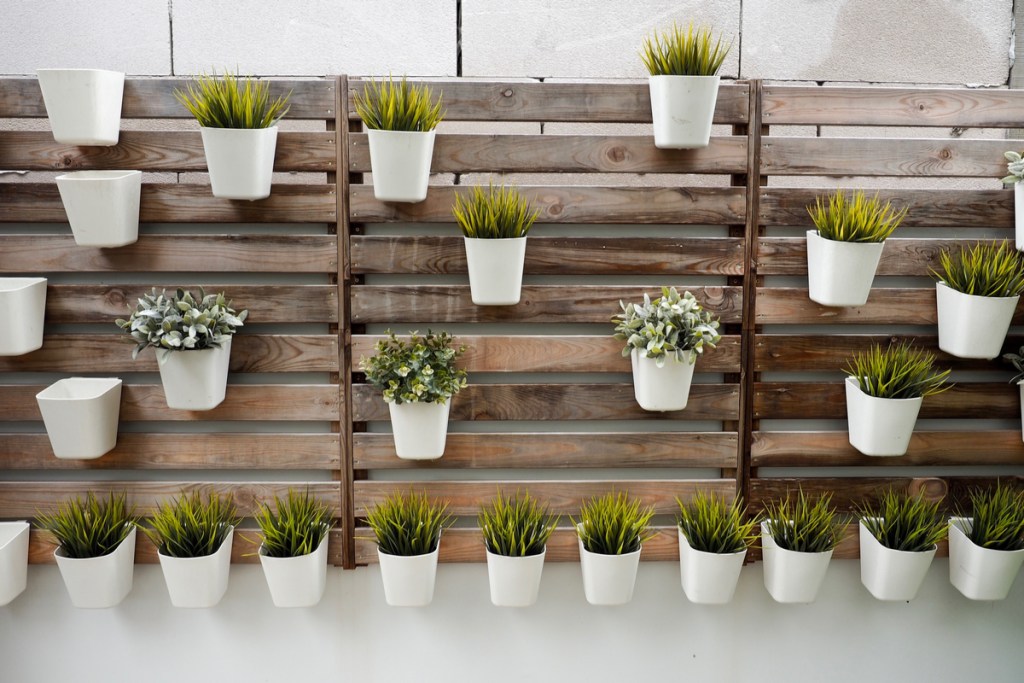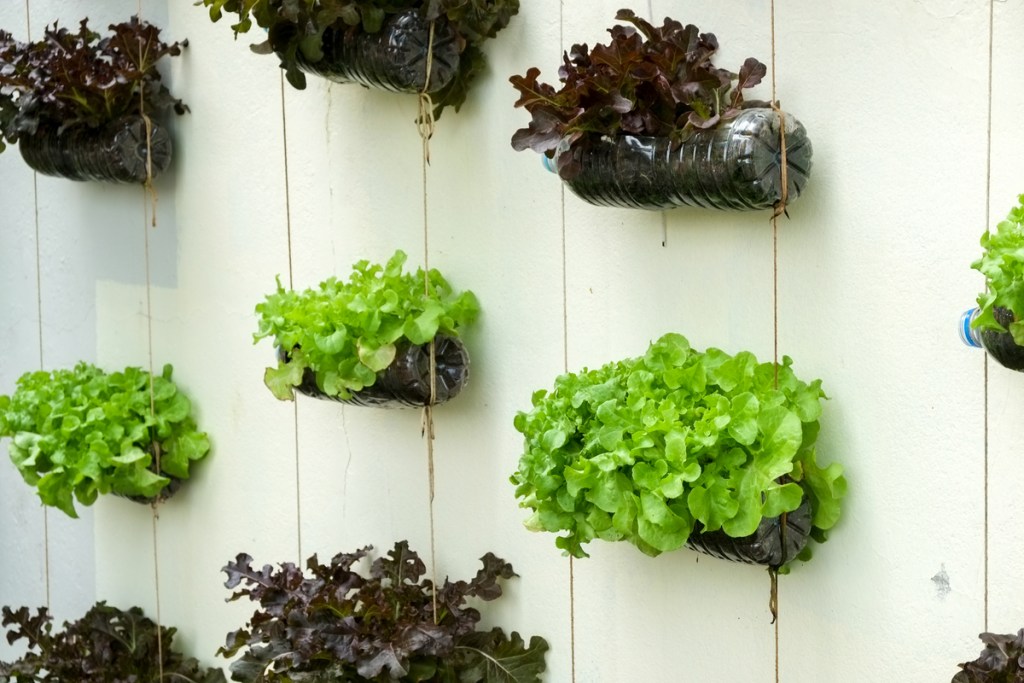Many home gardeners have an herb garden in some way, shape, or form, simply because those fresh ingredients can’t be matched by anything bought from the store. There’s nothing like adding a fresh sprig of parsley to a homemade red sauce or garnishing your favorite soups or stews with a bit of rosemary. Herb gardens aren't only useful, but also easy to set up! Most herbs are hardy and can grow indoors and out. If you're tight on space, you can even make a simple wall-hanging herb garden. Here's how!

The benefits of a wall-hanging herb garden
When people think of an indoor herb garden, their mind often goes to needing more containers, more plant stands, and a window with light to help them grow. Although that’s a perfectly viable option, it’s not always easy to do when your houseplant collection is, well, overfilled. So how do you combat that? By putting the herbs on the wall.
Setting up a wall-hanging herb garden can be as easy or as complex as you want — but no matter which way you look at it, this setup will free up floor space, make your home feel more open, and add a beautiful installation of greenery to your home. With a wall-hanging DIY herb garden, you aren’t limited to one aesthetic or one way to do things. There are a variety of ways you can set yours up, including:
- Upcycled wooden pallet
- Landscape fabric
- Leather and a wood trellis
- Pipes and hanging planters
- Rain gutter garden
- Spray-painted tin cans
- Wall planters
And really, the list goes on. If you have materials that work for growing plants and are handy with tools, you can figure out how to mount almost anything to the wall to create an aesthetic wall-hanging herb garden that works for you and your space.

Using planters for a wall-hanging herb garden
Setting up your wall-hanging herb garden will look different depending on the style you choose. Your materials will vary depending on the method you choose. We’ll go over a couple of different methods, but Country Living has a full list of vertical garden ideas you can reference for inspiration.
To start, here's how to set up a wall-hanging garden using planters:
Step 1: Repot any herb seedlings that are in small pots.
If your chosen herbs come in larger nursery pots, you’re more than welcome to leave them in there and set them in the plastic containers. If they’re smaller, though, you’ll want to either buy slightly larger nursery pots or another lightweight pot with a drainage hole so that the excess water has somewhere to go.
Step 2: Slip the herbs, in their pots, into the slightly larger plastic containers.
These are useful for catching excess water, so it doesn't drip onto your floor. If your wall-hanging garden is outdoors, then this step might not be necessary.
Step 3: Affix the wall hooks to the wall, making sure to space them out so the pots won't overlap.
Step 4: Hang your planters from the hooks.

Turning a wooden pallet into a beautiful centerpiece
A wood pallet herb garden is a great way to reuse and upcycle something that could otherwise be discarded. If your pallet is looking a little worse for wear, you can even decorate it before you begin! What’s more, a wooden pallet hanging garden can be set up outside or inside! If you’re looking for year-round herbs, though, finding a place indoors is ideal.
Here's how to turn an old pallet into a new garden:
Step 1: Choose screws that are sturdy enough to support the pallet.
You can find more information about how to do that here.
Step 2: Mount your pallet to the wall.
Make sure the spot you've chosen can accommodate your pallet, and drill it in carefully. Safety is important when using power tools.
Step 3: Repot any herbs that are in heavy or small nursery pots.
The ideal pot for a hanging garden is lightweight and has drainage holes.
Step 4: Slip the pots into plastic containers, to prevent excess water from dripping onto your floor.
Step 5: Attach wall hooks to the pallet or attach the pots to the pallet using strong wire.
Step 6: Hang your pots on your pallet.

The best place for a wall-hanging herb garden
Of course, a wall-hanging herb garden belongs on a wall, but which wall should you choose? Here's how to pick:
Step 1: Choose a wall where your herbs will get the best light.
If you're relying on natural light, make sure they're near a sunny window. You can use grow lights instead, in which case make sure there is room for your grow lights as well as your garden.
Step 2: Make sure your herbs have room to grow.
Your herbs won't get too big, but they'll still need some space to spread out. Additionally, from an aesthetic standpoint, you don't want your wall to feel crowded.
Step 3: Place your garden somewhere accessible.
Your garden won't be much use if it's very inconvenient to care for or harvest. Make sure your garden is at a reasonable height for you and isn't tucked away in an awkward corner somewhere. Placing it in or near your kitchen is a great idea, since this makes it easy to grab a few herbs while you're cooking.
Step 4: Choose herbs that are low-growing and have shallow roots.
Since they’ll be growing in individual pots, they won’t have as much space or room as those grown in deck boxes or garden beds. The good news is, there are still a lot of choices! Popular ones include:
- Basil
- Bay laurel
- Chives
- Mint
- Oregano
- Parsley
- Rosemary
- Thyme
These herbs will give you enough to have a well-rounded garden and bring a bit of freshness to almost any dish you can think of. The mint can even be used for homemade tea during the winter!

Maintaining your wall-hanging garden
Once your garden is all set up, here's how to care for it:
Step 1: Watch for signs of improper lighting and supplement with grow lights if necessary.
Once your garden is mounted, it can be tricky to move it. This can cause issues if your plants aren't getting enough light. The best solution is to supplement the natural light with a couple grow lights.
Step 2: Keep a strict watering schedule and check your plants' health daily.
Herbs dislike soggy soil, and their smaller pots leave less room for extra water to spread out.
Step 3: Water your herbs lightly when the top inch of soil is dry.
The goal is to keep the soil slightly moist without making it soggy.
An herb garden is a perfect way to have your home filled with beautiful smells and fresh ingredients year-round, and it isn’t too difficult to care for once you get the hang of it. Plus, there’s something extra special about a DIY garden project that makes a home feel truly unique.



